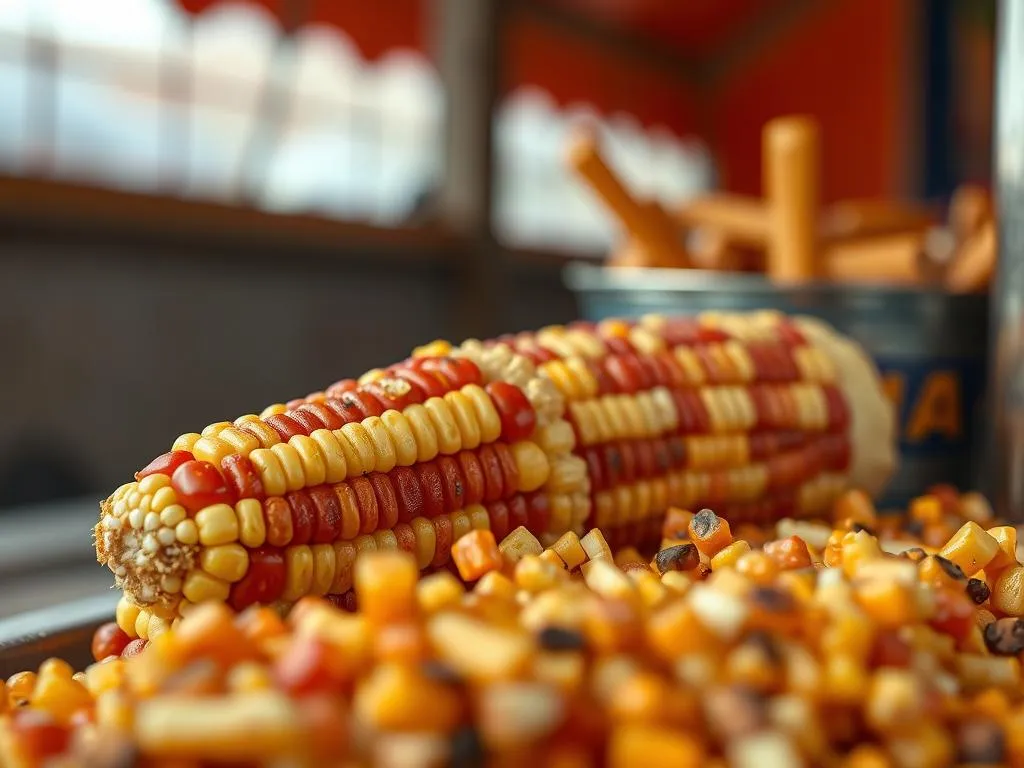
Introduction
Dog nutrition is paramount to the health and well-being of our furry friends. Understanding what goes into their food can help owners make informed choices that support their dog’s overall health. One ingredient that often sparks debate among pet owners is corn. Some believe it’s a harmful filler, while others argue it provides valuable nutrients. This article aims to explore the question: is corn in dog food bad? We’ll delve into its nutritional value, its role in dog diets, and what you need to know as a responsible pet owner.
Understanding Dog Nutrition
The Basics of Dog Nutrition
A balanced diet for dogs consists of various essential nutrients that support their growth, energy levels, and overall health. These nutrients include:
- Proteins: Necessary for muscle development, immune function, and hormone production.
- Fats: Provide energy and help with nutrient absorption.
- Carbohydrates: Offer a primary energy source and aid in digestive health.
- Vitamins: Essential for metabolic processes and overall well-being.
- Minerals: Contribute to bone health, nerve function, and various bodily processes.
A well-rounded diet ensures that these nutrients are available in the right proportions, promoting a healthy lifestyle for your dog.
Common Ingredients in Dog Food
Commercial dog food often contains a variety of ingredients, which may include meats, vegetables, grains, and fruits. Grains and legumes, such as corn, rice, and peas, play a significant role in providing carbohydrates and fiber. Understanding these components helps pet owners choose the right food for their dogs.
Corn as an Ingredient in Dog Food
Nutritional Profile of Corn
Corn is a cereal grain that offers a unique nutritional profile. It contains:
- Carbohydrates: Approximately 73% of corn’s composition is carbohydrates, making it a significant energy source.
- Proteins: Corn contains about 9% protein, although it is not as high-quality as animal protein.
- Fats: Corn has a low-fat content, around 4%, but includes essential fatty acids.
When compared to other grains, corn has a higher carbohydrate content but lower protein levels, which is crucial for evaluating its appropriateness in dog food.
The Role of Corn in Dog Diets
Corn is frequently included in dog food formulations for several reasons:
- Binder: It helps hold the kibble together, providing a desirable texture.
- Source of Energy: The high carbohydrate content offers a concentrated energy source for active dogs.
- Cost-Effective: Compared to other grains and protein sources, corn is often more affordable, making it a popular choice among manufacturers.
These factors contribute to corn’s prevalence in many commercial dog foods.
The Debate: Is Corn Bad for Dogs?
Arguments Against Corn in Dog Food
The inclusion of corn in dog food has led to various concerns among pet owners. Some common misconceptions include:
- Filler Ingredient: Many believe corn is merely a filler that provides no nutritional value. However, while it is a carbohydrate, it does offer energy and fiber.
- Allergies and Sensitivities: Some dogs may have allergies to corn, leading to digestive issues or skin problems. However, true corn allergies are relatively rare compared to other allergens like beef or chicken.
Potential health issues associated with corn include:
- Digestive Problems: Some dogs may struggle to digest corn, leading to upset stomachs or gas.
- Nutritional Imbalance: A diet disproportionately high in corn may lack sufficient protein and other nutrients.
Arguments in Favor of Corn in Dog Food
Despite the concerns, scientific studies have shown that corn can be a safe and digestible ingredient for many dogs. Key points in favor include:
- Safety and Digestibility: Research indicates that corn is well-tolerated by most dogs and can be digested effectively.
- Nutritional Benefits: Corn provides not only energy but also fiber, which supports digestive health.
- Reputable Brands: Many high-quality dog food brands, such as Hill’s Science Diet and Purina Pro Plan, include corn in their formulations, demonstrating its acceptance in the industry.
Understanding both sides of the debate allows pet owners to make informed decisions.
Assessing Your Dog’s Dietary Needs
Factors Influencing Nutritional Needs
Every dog is unique, and several factors influence their nutritional requirements:
- Age: Puppies, adults, and senior dogs have different dietary needs.
- Breed: Larger breeds may require different nutrients compared to smaller breeds.
- Size: The caloric needs of a small dog differ significantly from those of a large dog.
- Activity Level: Active dogs need more energy-dense foods than sedentary ones.
- Health Conditions: Certain health issues may necessitate special diets.
How to Evaluate Dog Food Ingredients
When selecting dog food, it’s crucial to read the ingredient labels carefully. Look for:
- Named Protein Sources: Ensure that the food lists specific meats as the first ingredient.
- Whole Grains or Vegetables: Check for whole grains like brown rice or vegetables rather than by-products.
- Nutritional Additives: Vitamins and minerals should be included to ensure a balanced diet.
Consulting with a veterinarian can also provide personalized dietary advice tailored to your dog’s specific needs.
Alternatives to Corn in Dog Food
Other Grain Options
If you prefer not to include corn in your dog’s diet, there are several other grain options available:
- Rice: A common carbohydrate source known for its digestibility.
- Barley: High in fiber and beneficial for digestive health.
- Oats: A good source of energy and can be easier on sensitive stomachs.
While grain-free diets have become popular, they may not be suitable for all dogs. Some dogs thrive on grains, while others may benefit from a grain-free approach.
Protein Sources Without Corn
High-quality protein sources are essential for a balanced diet. Consider alternatives such as:
- Meat: Chicken, beef, and lamb provide high-quality animal protein.
- Fish: Rich in omega-3 fatty acids, beneficial for skin and coat health.
- Legumes: Beans and lentils can serve as protein sources, though they should be balanced with other nutrients.
Balancing protein with carbohydrates ensures your dog receives a well-rounded diet that meets their energy and health needs.
Conclusion
In conclusion, the question of whether corn in dog food is bad is nuanced. While some dogs may have sensitivities to corn, for the majority, it can be a valuable component of their diet. As a pet owner, it’s essential to understand your dog’s individual needs and carefully evaluate dog food ingredients. Monitoring your dog’s health and dietary preferences will aid in making informed choices that benefit their well-being.
FAQs
Is corn in dog food bad for all dogs?
No, corn is not inherently bad for all dogs. While some may have allergies or sensitivities, most dogs can digest corn without issues.
Can dogs have allergies to corn?
Yes, dogs can have allergies to corn, but it is relatively rare compared to other ingredients like beef or chicken.
What should I do if my dog shows signs of a corn allergy?
If you suspect your dog has a corn allergy, consult your veterinarian. They may recommend an elimination diet to identify the allergen.
How can I introduce new foods to my dog’s diet safely?
Introduce new foods gradually over a week, mixing them with their current food to avoid digestive upset. Always monitor for any adverse reactions.









